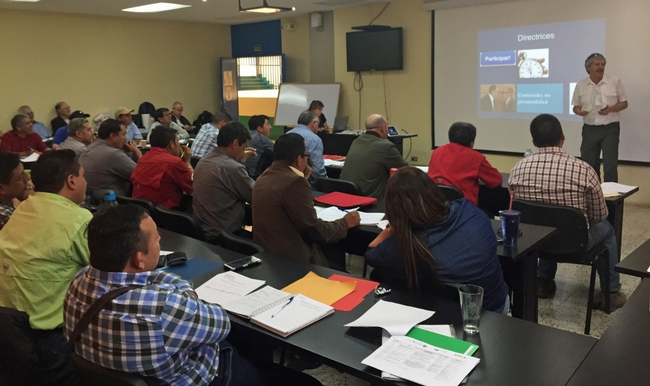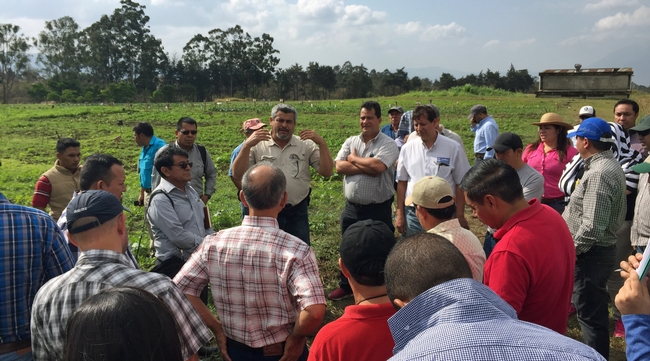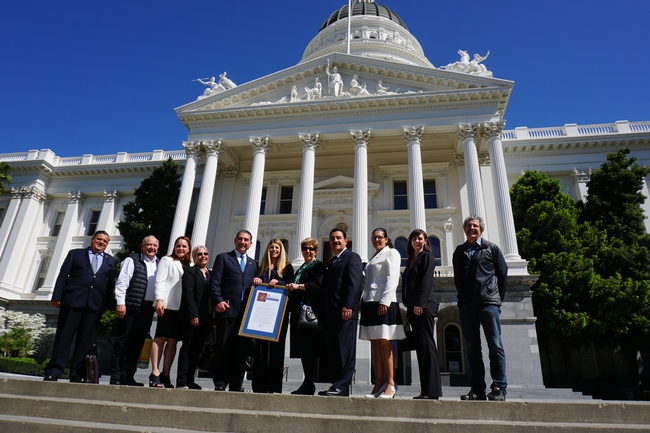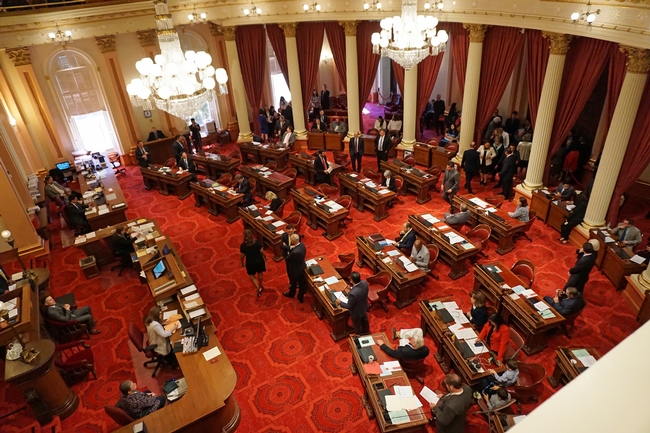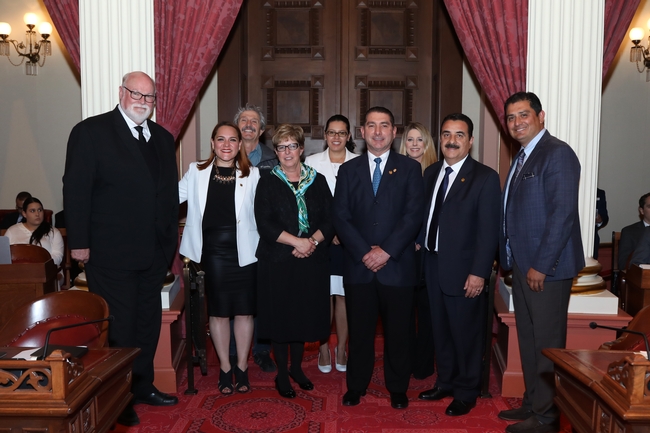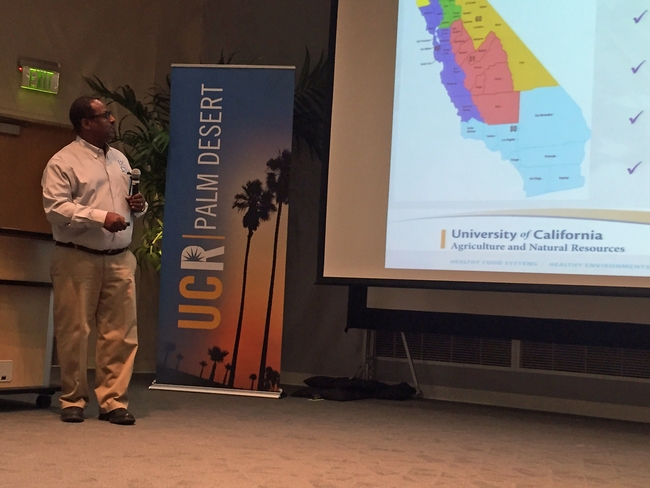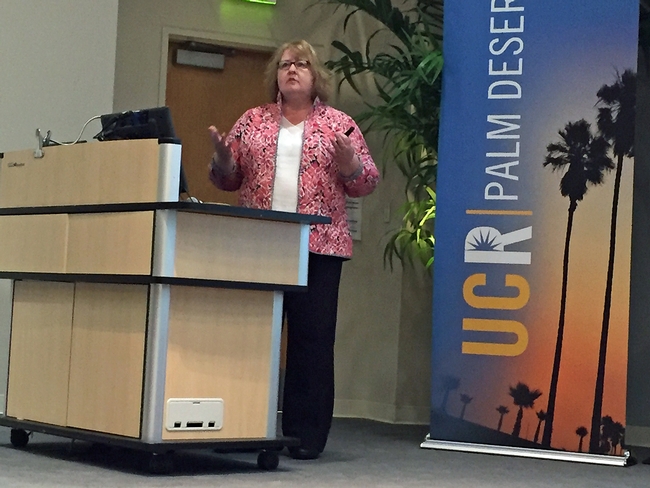Posts Tagged: Mark Bell
UC ANR working with USDA to strengthen extension and farmer incomes in Guatemala
Two UC Agriculture and Natural Resources emeritus specialists, two UC ANR advisors and a UC ANR vice provost spent a week in March working in Guatemala to help implement a USDA-funded (UC Davis-managed) project that is rebuilding the extension system in Guatemala.
With a population of almost 17.5 million and a per capita income ranked 118th in the world, Guatemala is working to improve the livelihoods and incomes of it's rural population, which represents nearly half of the total population. The project is being implemented in Guatemala with the Universidad de San Carlos. Universidad de San Carlos is the biggest and oldest university in Guatemala and which - when established in 1676 - was the fourth university established in the Americas. The 150,000-student university includes a prominent and well-known agricultural school.
The UC contingent delivered modules on extension and marketing, two of five required for the participants to receive a certificate. Jim Hill, emeritus rice specialist based at UC Davis, is leading the second phase of the project.
The rest of the team for the week were Steve Temple, emeritus agronomy specialist, UC Davis; Jairo Diaz, director, UC Desert Research and Extension Center; Ramiro Lobo, advisor, UC Cooperative Extension, San Diego County; Mark Bell, vice provost, strategic initiatives and statewide programs; and Kate Lincoln, CAES Global Engagement, UC Davis. Bell led the project when he was part of the UC Davis College of Agricultural and Environmental Sciences.
The interactive week-long course worked with 31 participants, mostly from the Guatemalan Ministry of Agriculture extension offices, but also included agriculture teachers. The team shared the essential steps and associated skills required for successful extension. The course used the Spanish acronym ASISTE as a framework (previously developed by Mark Bell, Maria Paz Santibanez and Elana Peach-Fine) as an easy way to remember the key steps. ASISTE stands for audience (audience), soluciónes (solutions), información simple (simple information), transferencia (transfer), and evaluación (evaluation).
As part of the course, participants developed and delivered their own mini-workshops using local issues and context to reinforce workshop discussions. As Guatemala has a large indigenous population with more than 20 languages, one of the participants delivered his talk in Tzutuhil, the main language used for his constituents in Santiago Atitlan, Sonora department.
Mexican dignitaries and UC 4-H leadership honored in the California State Senate
Dignitaries from the Baja California department of agriculture were recognized along with representatives of the UC Agriculture and Natural Resources 4-H program by the California State Senate on April 2 for an agreement the two organizations forged last year to bring 4-H to children across the border.
In presenting a resolution, Senator Ben Hueso, whose district includes the entire 156-mile border of California with Mexico, said the two countries share an agricultural legacy that has faced growing challenges in recent years, such as drought and climate change.
“This requires California and Mexico to share resources by providing access to outstanding educational opportunities what will prepare leaders, scientists, educators, entrepreneurs and professionals with the knowledge and commitment to address these very important issues,” Sen. Hueso said to his colleagues in the State Senate.
Sen. Hueso said education isn't the only issue addressed by the 4-H-Mexico accord.
“This is also a food scarcity issue, addressing food scarcity in our communities and in the world,” he said. “Both Imperial County and Baja California are very big players on the world stage for feeding people.”
The first group of children in the Mexicali 4-H program learned where their food comes from. A second cohort will undertake a project related to science. The program is a model for establishment of similar 4-H experiences for youth in the rest of Baja California and Mexico.
Sen. Hueso introduced the delegation from Mexico, led by Manuel Vallodolid Seamaduras, Secretary of Agriculture Development in the State of Baja California, Mexico (Secretaría de Desarrollo Agropecuario del Estado de México - SEDAGRO), and others in attendance to accept the resolution, including:
- Hortencia Medellin Acosta, Director of Rural Entrepreneurship, Mexicali, Baja California
- Carlos Orozco Riesgo, Member of the UC ANR 4-H Multicultural and Community Engagement Advisory Committee, former Undersecretary of SEDAGRO
- Belem Avendaño Ruiz, Director of Inspection, health and safety SEDAGRO
- Guillermo Gonzalez Rubio, Director, Livestock health department SEDAGRO
- Agustin Manuel Velazquez Bustamante, Legal Advisor SEDAGRO
- Mark Bell, Ph.D., Vice provost, UC Agriculture and Natural Resources
- Shannon Horrillo, Ph.D., 4-H Youth Development statewide director
- Lupita Fabregas, Ph.D., 4-H Youth Development assistant director for diversity and expansion
- Claudia Diaz Carrasco, 4-H Youth Development advisor, Riverside and San Bernardino counties
“I hope that California, the nation's leading agriculture producing state, will continue to foster cooperation with Mexico and train future leaders through the launch of the 4-H Club in Mexicali,” Sen. Hueso said. “Please join me in welcoming them to the California State Senate and thanking them for their work in advocacy in helping educate the future.”
Learn more
Click here to view Sen. Hueso announce the resolution.
Click here to read the California State Senate resolution recognizing the establishment of a 4-H program in Mexicali, Mex.
California’s desert agriculture is hot stuff
Stretching from the Death Valley to Calexico, California's vast dry desert is home to a unique and important agriculture industry.
It's a place where summertime temperatures often top the 115-degree mark. Where water supplies for irrigation depend on the Colorado River, but upriver states are claiming more of it. Where evapotrasporation – a reference rate of water use in unstressed turf grass – is 72 inches per year, but rainfall is rarely more than 4.
Still, stalwart farmers grow dates, carrots, lettuce, broccoli, cabbage, kale and more, plus plants for landscaping everything from family homes to beautiful and luxurious resorts. The agriculture output of the state's three desert counties – Riverside, San Bernardino and Imperial – exceeds $4 billion annually.
The California desert also impacts the quality of life across the nation. If Americans are enjoying a salad in the winter, the lettuce most likely was grown in the California desert. There are bountiful winter recreation opportunities available on the beautifully manicured golf courses, parks and landscapes.
A group of UC Agriculture and Natural Resources (UC ANR) academics formed a desert workgroup to better serve the state's desert region. The group organized a symposium in February to bring together representatives from desert farm and natural resources communities, related industry and academics working in the desert.
“The close exchange of information among desert researchers, non-profit organizations, industry and clientele groups will facilitate collaboration among UC ANR, Arizona and Mexico and foster how our programs should be shaped on a regional level,” said Oli Bachie, the director of UC Cooperative Extension in Imperial County and the current workgroup chair.
With saline soil, scorching summer temperatures and limited water supplies, the desert could be considered a hotbed of the “wicked problem.” A wicked problem isn't evil, said UC Associate Vice President Wendy Powers, the symposium's plenary session keynote speaker.
“The term ‘wicked problem' was coined at UC Berkeley,” Powers said. “It's a problem with circumstances that resist resolution.”
She named climate change and the growth of the global population California must help feed as wicked problems faced by the state. Powers described UC ANR's statewide programs that are working to find solutions to formidable issues faced in California agriculture.
“We're on the verge of some serious breakthroughs as we look at solving wicked problems,” Powers said. “They are accelerated by conversations like those we're having today.”
UC Vice Provost Mark Bell said that the potential of UC ANR to reach every single Californian is what drew him to his position in 2017. Bell invoked Star Wars robot R2D2 for an acronym to reflect the characteristics that accurately define UC ANR.
“R2 stands for reach and relevance,” he said. “D2 is diverse and dispersed.”
UC Cooperative Extension offices serve 57 California counties and its nine research and extension centers are located in key agriculture ecosystems, including one in the low desert of the Imperial Valley.
The afternoon program of the symposium included breakout sessions to highlight programs and research efforts in three broad areas: irrigation and crop production, landscape management, and livestock and feed quality.
“This was the first attempt to organize such a regional desert-based symposium for the UCANR Desert Workgroup with the collaboration of desert-serving UCCE counties,” Bachie said. “I believe that we have registered a remarkable get-together.”
The symposium had speakers and participants from UC, USDA, California Department of Food and Agriculture, the desert agricultural industry, pest control advisors, non-profit institutions and organizations, agricultural commissioners, farm bureaus, Arizona and Mexico universities and the general public.
“I believe that the symposium is a stepping stone for future desert research and extension meetings, conferences and symposiums among people engaged or interested in desert agriculture and natural resources,” Bachie said.

